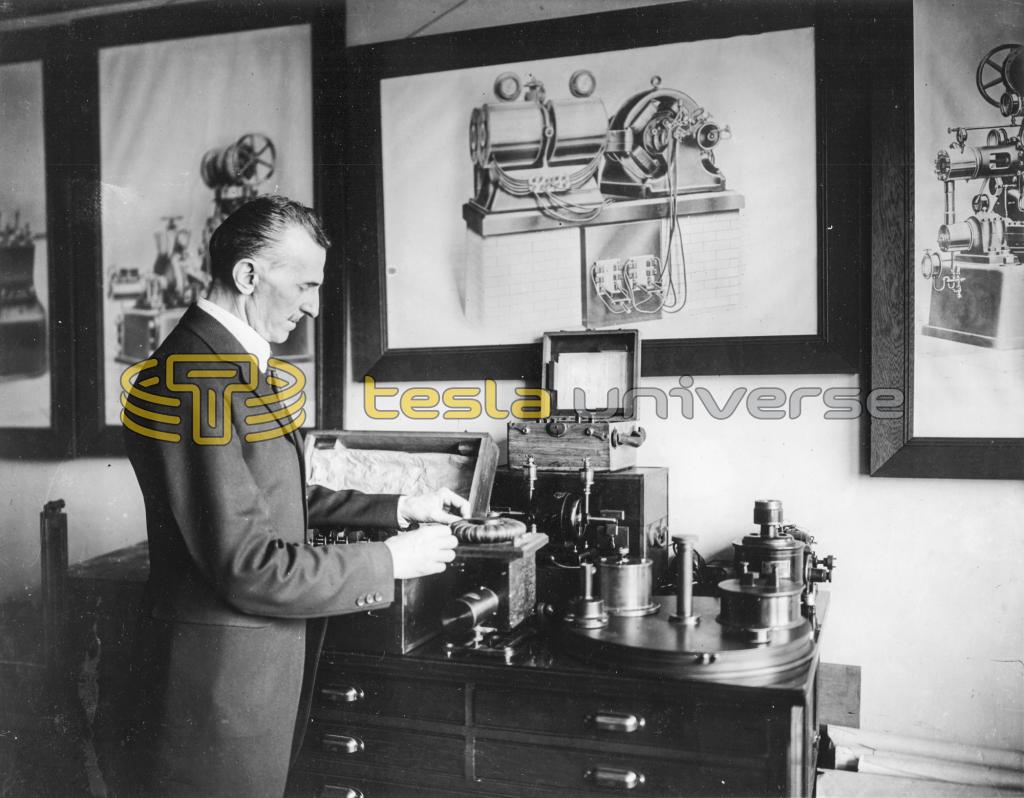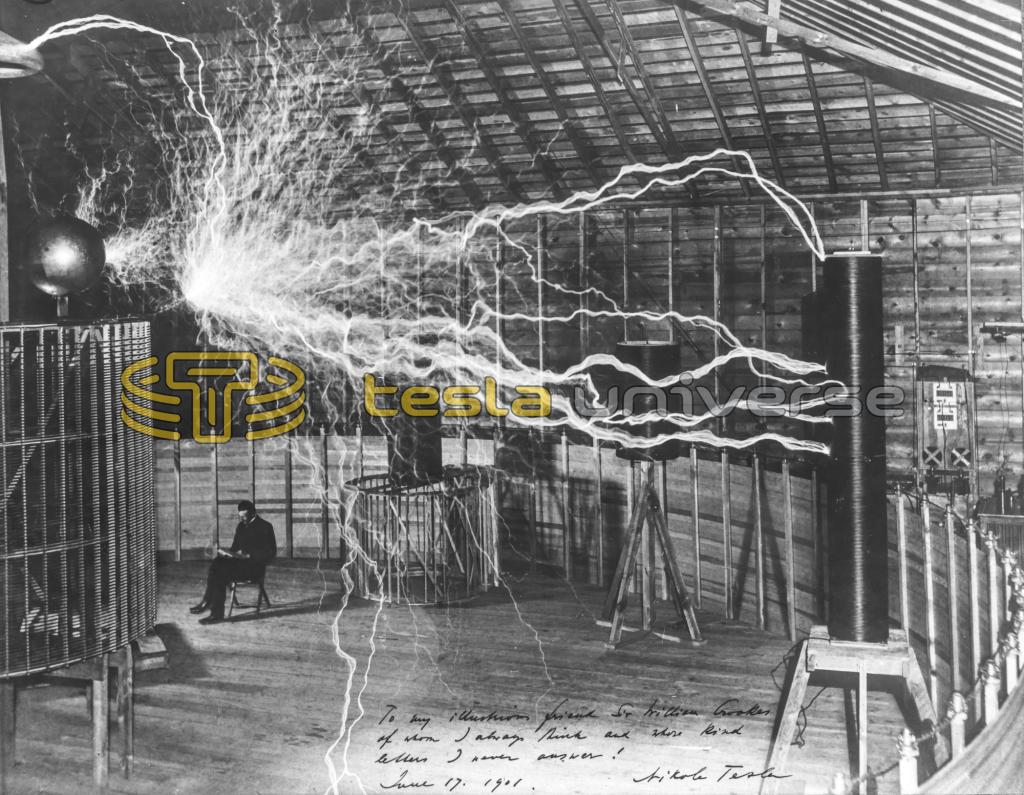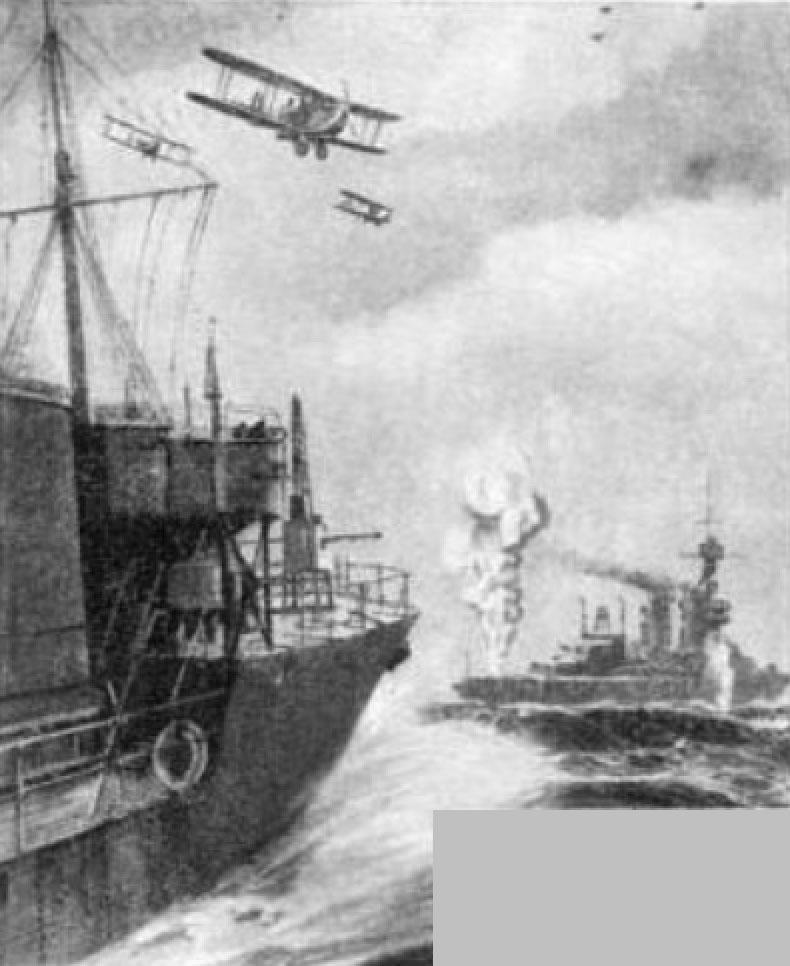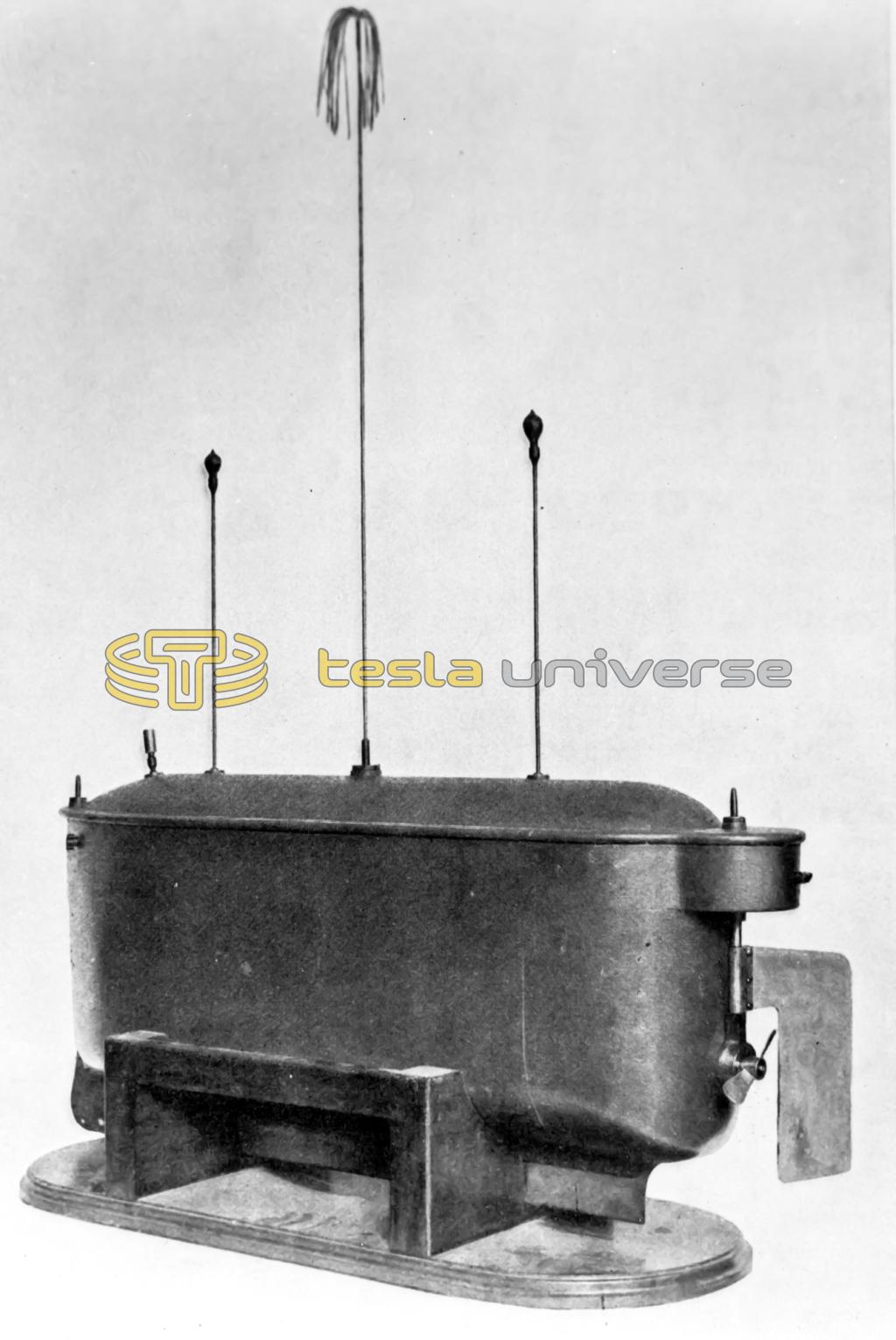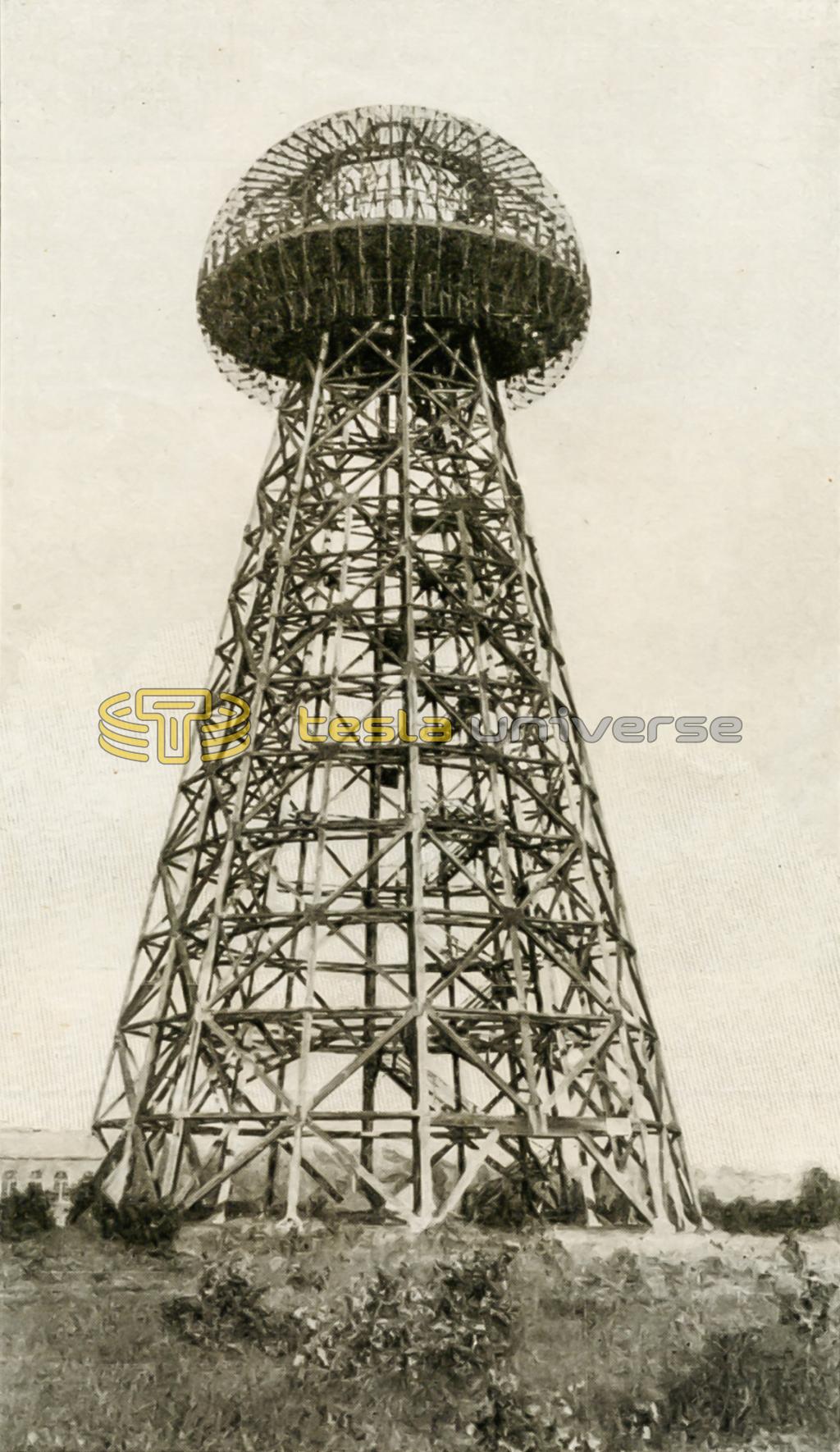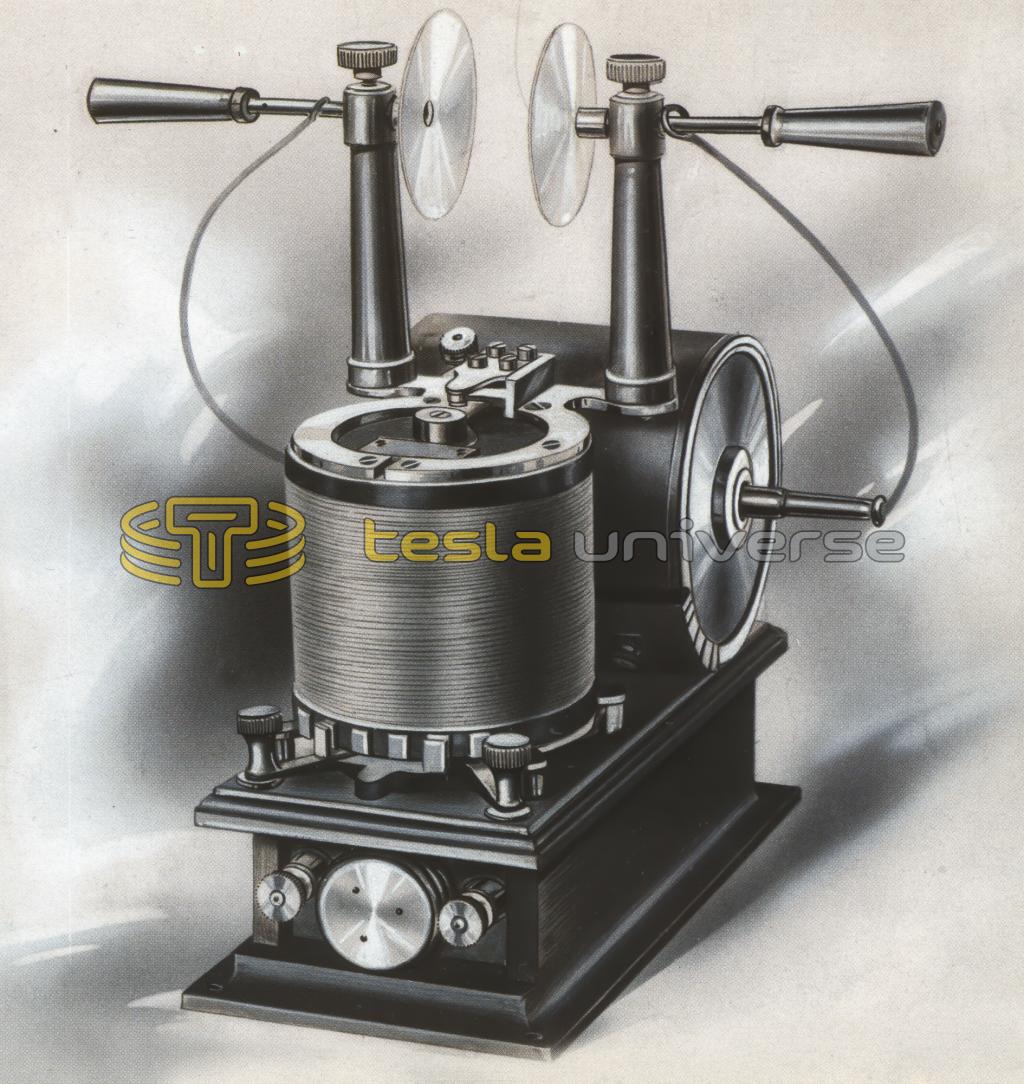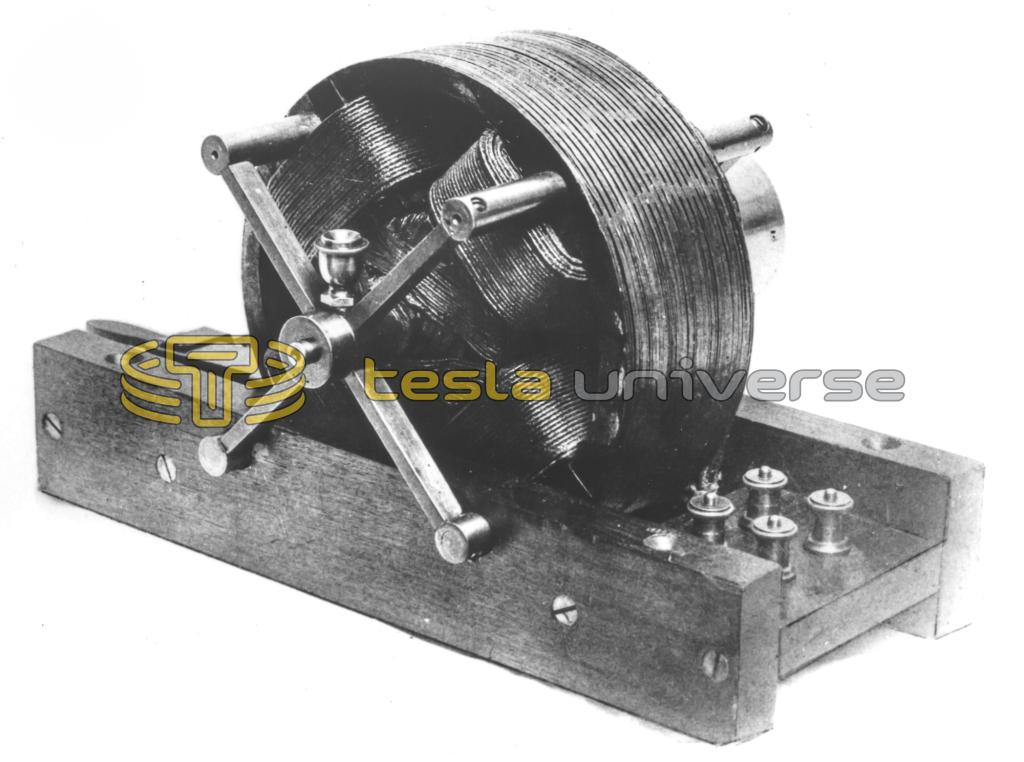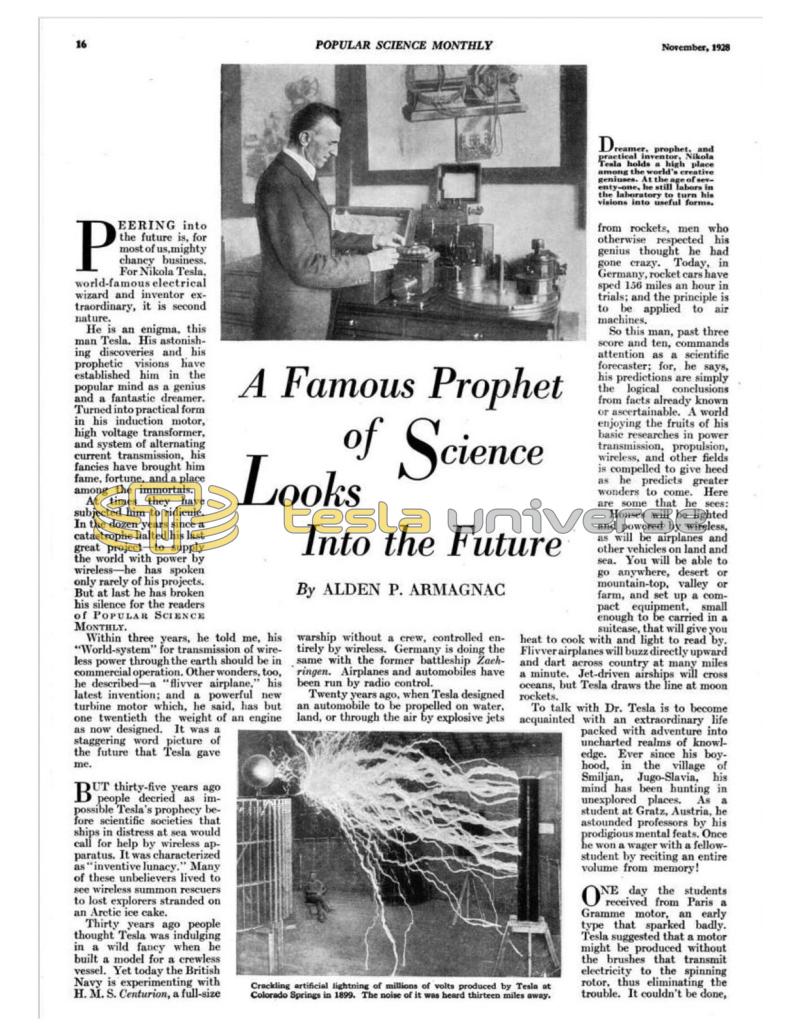
Nikola Tesla Articles
A Famous Prophet of Science Looks Into the Future
Peering into the future is, for most of us, mighty chancy business. For Nikola Tesla, world-famous electrical wizard and inventor extraordinary, it is second nature.
He is an enigma, this man Tesla. His astonishing discoveries and his prophetic visions have established him in the popular mind as a genius and as fantastic dreamer. Turned into practical form in his induction motor, high voltage transformer, and system of alternating current transmission, his fancies have brought him fame, fortune, and a place among the immortals.
At times they have subjected him to ridicule. In the dozen years since a catastrophe halted his last great project — to supply the world with power by wireless — he has spoken only rarely of his projects. But at last he has broken his silence for the readers of Popular Science Monthly.
Within three years, he told me, his “World-system” for transmission of wireless power through the earth should be in commercial operation. Other wonders, too, he described — a “flivver airplane,” his latest invention; and a powerful new turbine motor which, he said, has but one twentieth the weight of an engine as now designed. It was a staggering word picture of the future that Tesla gave me.
But thirty-fine years ago people decried as impossible Tesla's prophecy before scientific societies that ships in distress at sea would call for help by wireless apparatus. It was characterized as “inventive lunacy.” Many of these unbelievers lived to see wireless summon rescuers to lost explorers stranded on an Arctic ice cake.
Thirty years ago people thought Tesla was indulging in a wild fancy when he built a model for a crewless vessel. Yet today the British Navy is experimenting with H.M.S. Centurion, a full-size warship without a crew, controlled entirely by wireless. Germany is doing the same with the former battleship Zachringen.
Twenty years ago, when Tesla designed an automobile to be propelled on water, land, or through the air by explosive jets from rockets, men who otherwise respected his genius thought he had gone crazy. Today, in Germany, rocket cars have sped 156 miles an hour in trials; and the principle is to be applied to air machines.
Houses will be lighted and powered by wireless, as will be airplanes and other vehicles on land and sea. You will be able to go anywhere, desert or mountain-top, valley or farm, and set up a compact equipment, small enough to be carried in a suitcase, that will give you heat to cook with and light to read by. Flivver airplanes will buzz directly upward and dart across country at many miles a minute. Jet-driven airships will cross oceans, but Tesla draws the line at moon rockets.
To talk with Dr. Tesla is to become acquainted with an extraordinary life packed with adventure into uncharted realms of knowledge. Ever since his boyhood, in the village of Smiljan, Jugo-Slavia, his mind has been hunting in unexplored places. As a student at Gratz, Austria, he astounded professors by his prodigious mental feats. Once he won a wager with a fellow-student by reciting an entire volume from memory!
Less than five years later, Tesla invented just such a machine, the “induction motor” which brought him fame. Without brushes, it operates on the principle of the “rotating magnetic field” — a sort of magnetic cyclone, discovered by Tesla, that grips the armature and whirls it.
After this discovery, described by such a hard-headed engineer as H. W. Buck, president of the American Institute of Electrical Engineers, as “one of the greatest feats ever performed by human mind,” Tesla came to America. He invented the “Tesla coil” or “Tesla oscillation transformer.” Today every wireless transmitter and receiver embodies this great principle, which has also been put to innumerable other uses in science and industry.
With it, he turned ordinary electricity into crackling lightning of millions of volts. Noises of thunderous discharges smote the ears of visitors to his Colorado Springs, Colo., wireless plant erected early in 1899; they could even be heard in Cripple Creek, Colo., thirteen miles away!
It was there that Dr. Tesla carried out his scheme of sending power by wireless through the earth. No “wireless” such as we know today as radio, was this. He transmitted, not radio waves through the air, mostly wasted, but electric currents through the ground. By this method, he told me, he transmitted enough power around the earth to light several hundred incandescent lamps, and proved that power in industrial amounts could be transmitted to any distance with an efficiency as high as ninety-nine and a half percent.
In reality the tower was Dr. Tesla's “Magnifying Transmitter,” intended to feed electric power into the earth. At its top, a globular dome was to store momentarily, before hurling into the earth, tremendous currents produced by a “Tesla oscillation transformer” in the tower's center. Nearly completed was the odd structure, when a dynamite blast of unknown origin turned it into a twisted mass of ruins.
Today he is ready to build a new and larger plant. And he is confident that by 1931 it will be in commercial operation. This plant was also to broadcast speech, and pictures by a system of daylight television without moving devices outlined by him in 1893.
A fantastic dream? Perhaps — but Tesla has dreamed such dreams before and seen them come true.
Besides his world power scheme, Dr. Tesla says he is devoting his time chiefly to his vertically rising flying machine. This aerial flivver is to weigh less than 200 pounds, and to occupy no more space than a seven-foot cube. It is to rise to a great height at a rate of from one to two miles a minute, and may attain a horizontal speed as high as 400 miles an hour, power being supplied by an exceedingly light oil-burning motor, a modification of a steam turbine Tesla invented. An all-metal framework and the absence of gasoline guard against fire hazard. Additional safety is to be attained by a parachute of new construction.
Unlike inventors who work with the tedious process of trial and error, Tesla visualizes his inventions, full-fledged, even to the smallest detail. One evening he was walking with a friend through the City Park of Budapest, quoting from a book of poems he had learned by heart. In the middle of a line he broke off, seized a small stick, and scratched a rough picture on the sand. It was his induction motor, revealed to him in its entirety! And the plan he drew was the same that, seven years later, he presented to the American Institute of Electrical Engineers.
Equally spectacular was his demonstration of a wireless lamp, at his Grand Street laboratory in New York City. At three o'clock one morning, when he and his workmen were ready to quit for the night, Tesla decided that a certain high-frequency generator he had been constructing was ready for the test of a new lamp that would light without wires. He sent his workmen outside while he made ready the apparatus. All that remained was to close a switch.
When the workmen returned, Tesla strode to the middle of the laboratory. In each hand he held a long glass tube, exhausted of air. “If my theory is correct,” he told his assistants, “when the switch is thrown in, these tubes will become swords of fire. Darken the room and close the switch.”
The lights went out, and there was a faint click. Instantly the tubes became fiery blades in the darkness! His men stared, open-mouthed. The half believed him a magician.
In his Houston Street laboratory in New York, he exhibited a two-hundred-horsepower “Tesla Coil” carrying currents oscillating eighty million times a second. When Tesla placed a disk of lead on a stick and swung it over this coil, the lead exploded with a report like that of a canon. Visitors to the laboratory, carrying keys and other conducting objects in their pockets, would cry out in pain as the metal became burning hot. But so confident was Tesla that the terrific electric force of this coil would not harm a human being, that one day he terrified spectators by placing his own head repeatedly inside it! He is alive, thanks to the correctness of his theory; but he tells me now that the mere recollection of his folly still sends a shiver down his spine.
At the time I talked to Dr. Tesla the newspapers were discussing the possibility of the flight of a rocket to the moon.
“No rocket,” he insisted, “will reach the moon save by a miraculous discovery of an explosive far more energetic than any known. And even if the requisite fuel were produced, it would still have to be shown that the rocket machine would operate at four hundred and fifty-nine degrees below zero — the temperature of interplanetary space.
“The mean distance of the moon,” he explained, “is 238,862 miles, and its mass 1/81.8 that of the earth's. Travel 215,085 miles away from the earth, and the gravitational attraction of earth and moon will be equal.”
“To project a missile as far as that point will mean starting at an initial velocity of 6.8815 miles a second — not making additional allowance for the atmosphere's retarding action. And irrespective of this speed, which might be less in a rocket than a projectile from a gun, the actual work performed in lifting each pound of weight skyward would be 20,499,712 footpounds of energy, requiring 26,346 B. t. u., or heat units, produced by the burning of the fuel. Even if the rocket weighed only a pound for every pound of fuel it carried, just twice this amount, or 52,692 B. t. u., must be developed for every pound of fuel.
“Now when you consider that the thermal efficiency could hardly exceed forty percent, and the mean propulsive efficiency fifty percent, 263,460 B. t. u. must be evolved by every pound of fuel —an enormous quantity of energy, about sixty times greater than that of dynamite! Although diminishing fuel weight and weakening gravity would make the rocket's path easier as it progressed, it is evident that no known fuel could drive it clear to the moon.”
This discussion of tremendous power suggested the possibility of harnessing atomic energy.
“The scheme is worse than that of a perpetual motion machine — for the latter will almost work!” he exclaimed. “A motor driven by atomic power is unrational because it would take far more energy to break up an atom's structure than can be recovered in more useful work.”
On the whole subject of matter, in fact, Dr. Tesla holds views that are startlingly original. He disagrees with the accepted atomic theory of matter, and does not believe in the existence of an “electron” as pictured by science — or, he maintains, if it can exist at all, it does so only in perfect vacuum.
“To account for its apparently small mass, science conceives the electron as a hollow sphere, a sort of bubble,” Tesla says. “Now, a bubble can exist in such a medium as a gas or liquid because its internal pressure is not altered by deformation. But if, as supposed, the internal pressure of an electron is due to the repulsion of electric masses, the slightest conceivable deformation must result in the destruction of the bubble!
“Just to mention another improbability, the force tending to tear an electron apart is, in pounds per square inch, represented by the staggering figure of 256,899 followed by twenty-one zeros — and this is 513,798,000,000,000,000,000 times greater that the tension that tungsten wire can withstand! And yet it does not burst! Not even when it is hurled against an obstacle with a speed hundreds of thousands times greater than that of a bullet!
And — more widely interesting in this day of radio — this strange, many-sided man clings to the opinion he expressed in his scientific investigations published from 1896-1898, that the source of all rays we know is always a stream of tangible particles or “corpuscles,” rather than waves or vibrations. Even before the discovery of radium, Tesla expressed his belief that radioactive rays were of this sort, a view ridiculed at that time. When radium was discovered it was found actually to emit particles of matter — flying nuclei of helium atoms, called “alpha” rays. Tesla has maintained ever since that radium is not a generator but a transformer of energy, the emanations being caused by cosmic rays of immense power capable of penetrating all obstacles however thick. The existence of this radiation — which, he says, should not be confounded with the comparatively very feeble “cosmic rays” observed more recently — he has proved by mathematical theory agreeing closely with experiment.
These conclusions Tesla has drawn from experiments with a remarkable vacuum tube of his own invention, with a single electrode, operated at millions of volts.
I asked Tesla what part of his life work lay closest to his heart. And the answer surprised me. It was not the world wireless system, nor the airplane. It was not the induction motor, today the basis of industries in which billions of dollars are invested all over the world. Instead, it was the discovery of the principle that preceded the induction motor — the “rotating magnetic field.”
“When I made the discovery of the rotating magnetic field,” Dr. Tesla said, “I was a very young man. The revelation came after years of concentrated thought and it was my first great thrill.
“It was not only a valuable discovery, capable of extensive practical applications. It was a revelation of new forces and new phenomena unknown to science before.
“No,” Dr. Tesla said with some feeling, “I would not give my rotating field discovery for a thousand inventions, however valuable, designed merely as mechanical contraptions to deceive the eye and the ear. A thousand years hence, the telephone and the motion picture camera may be obsolete, but the principle of the rotating magnetic field will remain a vital, living thing for all time to come.”
